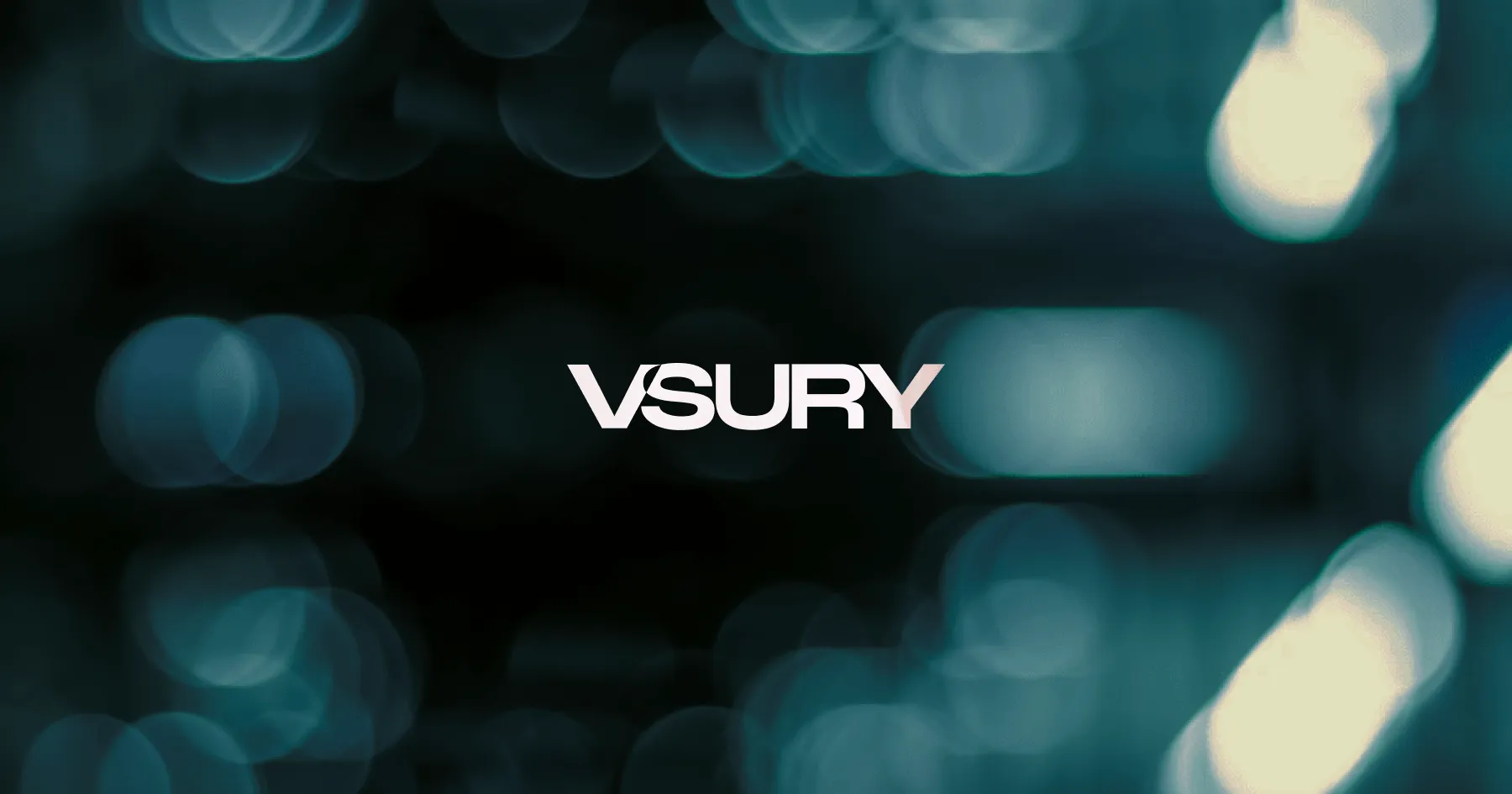The uploaded image perfectly captures the essence of modern branding work. Clean VSURY typography against dynamic lighting effects, showing how professional design cuts through market noise to create memorable impressions. This isn't just about pretty logos anymore. It's about crafting an entire ecosystem that makes people choose you over everyone else.
TL;DR: Brand development encompasses the strategic creation and continuous refinement of your company's visual identity, messaging, values, and customer experience to establish market differentiation and build lasting customer relationships. This process includes everything from logo design and color psychology to voice development and positioning strategy, ultimately creating a cohesive experience that drives business growth.
Here's what most businesses get wrong about this stuff. They think it's a one-time project. Design a logo, pick some colors, write a tagline. Done.
That's not real development. That's just graphic design with delusions of grandeur.
Real brand work is an ongoing strategic process that evolves with your market, your customers, and your business goals. It's the difference between companies that struggle for recognition and those that become household names in their industries.
Why Professional Brand Development Matters More Than Ever
The marketplace has fundamentally shifted. Your customers encounter hundreds of brands daily through social media, search results, and digital advertising. In this chaos, professional development becomes your competitive advantage.
Think about it this way. When someone searches for services in your industry, they're not just comparing prices. They're making split-second decisions based on visual appeal, perceived credibility, and emotional connection. Professional services focus on optimizing every touchpoint to influence these crucial micro-decisions.
Take two identical service providers. One has invested in comprehensive development work. Cohesive visual identity, clear messaging, professional website design. The other relies on default templates and generic stock photos. Which one gets the phone call?
The professionally designed company wins every time. Not because their service is better, but because their strategy communicates competence, reliability, and value before the customer even makes contact.
The Core Components of Effective Brand Development
Strategic development encompasses several interconnected elements that work together to create market impact. Let's break down what actually moves the needle.
Visual Identity Systems
Your visual development starts with understanding color psychology, typography hierarchy, and design consistency. But here's where most companies crash and burn. They focus on what they like instead of what their customers respond to.
Research shows that consistent visual branding increases revenue by up to 23%. That's not because pretty designs magically generate money. It's because visual consistency builds recognition, and recognition builds trust.
The visual elements include:
• Logo design and variations for different applications
• Color palette selection based on industry psychology and target demographics
• Typography systems that reinforce personality
• Imagery style and photo treatment guidelines
• Graphic element libraries for consistent application
Custom development takes this further by ensuring every visual element reflects your unique market position rather than generic industry templates.
Messaging and Voice Development
Strategic messaging goes beyond slogans and taglines. It's about developing a consistent voice that resonates with your specific audience while differentiating from competitors.
Here's what breaks people's brains about messaging. It's not about saying what you do. It's about communicating why it matters to your customers.
Effective voice includes:
• Tone guidelines for different communication channels
• Key message frameworks for various audience segments
• Storytelling elements that create emotional connections
• Value proposition clarity that addresses real customer pain points
• Conversational patterns that feel authentic to your personality
The best strategies create messaging that customers remember and repeat. When people describe your business to others using your own words, that's when you know your messaging is working.
Strategic Positioning Through Development
Strategic positioning determines how customers categorize and remember your business. This is where professional development becomes crucial for long-term growth.
Position too broadly, and you become forgettable. Position too narrowly, and you limit growth opportunities. Professional development finds the sweet spot where you own a specific market perception while maintaining expansion flexibility.
Strategic positioning involves:
• Competitive analysis to identify market gaps and opportunities
• Target audience research to understand decision-making factors
• Value proposition development that addresses unmet needs
• Market differentiation strategies that set you apart from competitors
• Positioning statement creation that guides all decisions
The goal isn't to appeal to everyone. It's to become the obvious choice for your ideal customers.
How the Brand Development Process Actually Works
Real development follows a strategic process, not random creative bursts. Here's how professional agencies approach comprehensive projects.
Discovery and Research Phase
Research forms the foundation of everything that follows. This phase includes competitor analysis, target audience interviews, market positioning assessment, and internal stakeholder alignment.
Many businesses skip this step and jump straight to design. Big mistake. Without proper research, development becomes expensive guesswork.
Research-driven work uncovers insights like what visual elements your target audience associates with quality and trustworthiness. How competitors position themselves and where gaps exist. What messaging resonates with your ideal customers versus what you think sounds good.
This research phase typically takes 2-4 weeks for comprehensive projects.
Strategy Development and Architecture
Strategic planning translates research insights into actionable frameworks. This includes developing positioning statements, messaging hierarchies, visual direction guidelines, and implementation roadmaps.
The strategy phase answers critical questions. What makes your company uniquely valuable in the marketplace? How should elements work together across touchpoints? What priorities will drive the most business impact?
Strategic development creates alignment between creative execution and business objectives. Pretty designs that don't drive business results aren't effective development.
Creative Execution and Implementation
This is where strategy becomes tangible assets. Logo creation, color palette development, typography selection, imagery style guides, and voice documentation.
But here's the thing about execution. Consistency matters more than perfection. A cohesive approach with 80% execution beats scattered perfection every time.
Implementation includes:
• Logo design with variations for different applications
• Guidelines documentation for consistent application
• Marketing collateral templates aligned with standards
• Digital asset creation for website and social media platforms
• Training for internal teams and external partners
The best projects create systems, not just individual designs.
Testing and Refinement
Professional work includes feedback loops and performance measurement. A/B testing messaging variations, monitoring recognition metrics, tracking customer sentiment, and refining elements based on real-world performance.
This isn't set-and-forget. Markets evolve, customer preferences shift, and competitive landscapes change. Successful strategies adapt while maintaining core equity.
Common Brand Development Mistakes That Kill Results
Most failures stem from predictable mistakes. Here are the big ones that destroy ROI and waste marketing budgets.
Copying Competitor Approaches
Imitation might be flattery, but it's terrible strategy. When you copy competitor approaches, you position yourself as a follower rather than a leader.
Worse, copycat development forces you to compete on price because you haven't differentiated on value. Original work creates unique market positions that command premium pricing.
Focusing on Personal Preferences Over Customer Psychology
The biggest mistake? Designing for your own tastes instead of your customers' decision-making patterns.
Your personal color preferences don't matter. Your customers' psychological responses to different elements do matter. Professional work prioritizes market research over internal opinions.
Inconsistent Application
Perfect guidelines mean nothing if they're not consistently applied. Inconsistent application confuses customers and weakens recognition.
This shows up in mismatched social media graphics, off-standard marketing materials, and website designs that don't align with other elements.
Rushing the Timeline
Quality work takes time. Rushing the process leads to surface-level solutions that don't address underlying positioning challenges.
Fast development might save money upfront, but it costs more long-term when you need complete rebrands to fix strategic mistakes.






